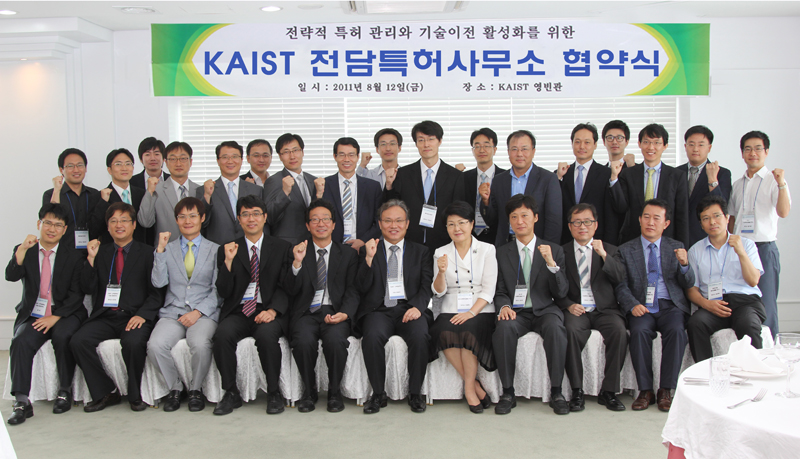policy
KAIST’s Industry-University Collaboration Team started the operation of 20 specialized patent offices in order to improve the efficiency and specialty of patenting and commercialization of research results of KAIST. With the start of the operation of the patent offices, KAIST now has laid the groundwork for creating patent rights and improved patent use through improving services for technology developers and inventors.
The patent offices will offer various types of support related to patent rights and technology transfer by providing services such as interviews with inventors, preliminary reviews of technologies, and evaluations to find the invented technology patents worthwhile.
KAIST overwhelmingly outpaced other universities in the nation and ranked the “number one research university” in patent ownerships. According to the Korean Intellectual Property Office that investigated the number of patents domestic universities had acquired over the period of 5 years from 2006 to 2010, KAIST had 4,403 patents and was named the first in the fields of information and communication, electric materials and semiconductors, electronic circuit, automobile, and inorganic chemistry.

-
event Professor Mikyoung Lim from Mathematical Sciences to Deliver Keynote at International Conference on Applied Inverse Problems
<Professor Mikyoung Lim from KAIST Department of Mathematical Sciences> Professor Mikyoung Lim from KAIST Department of Mathematical Sciences gave a plenary talk on "Research on Inverse Problems based on Geometric Function Theory" at AIP 2025 (12th Applied Inverse Problems Conference). AIP is one of the leading international conferences in applied mathematics, organized biennially by the Inverse Problems International Association (IPIA). This year's conference was held from July 2
2025-08-14 -
event KAIST Takes the Lead in Developing Core Technologies for Generative AI National R&D Project
KAIST (President Kwang Hyung Lee) is leading the transition to AI Transformation (AX) by advancing research topics based on the practical technological demands of industries, fostering AI talent, and demonstrating research outcomes in industrial settings. In this context, KAIST announced on the 13th of August that it is at the forefront of strengthening the nation's AI technology competitiveness by developing core AI technologies via national R&D projects for generative AI led by the Minis
2025-08-13 -
research KAIST develops “FlexGNN,” a graph analysis AI 95 times faster with a single GPU
<(From Left) Donghyoung Han, CTO of GraphAI Co, Ph.D candidate Jeongmin Bae from KAIST, Professor Min-soo Kim from KAIST> Alongside text-based large language models (LLMs) including ChatGPT, in industrial fields, GNN (Graph Neural Network)-based graph AI models that analyze unstructured data such as financial transactions, stocks, social media, and patient records in graph form are being actively used. However, there is a limitation in that full graph learning—training the entire
2025-08-13 -
research KAIST Develops World’s First Wireless OLED Contact Lens for Retinal Diagnostics
<ID-style photograph against a laboratory background featuring an OLED contact lens sample (center), flanked by the principal authors (left: Professor Seunghyup Yoo ; right: Dr. Jee Hoon Sim). Above them (from top to bottom) are: Professor Se Joon Woo, Professor Sei Kwang Hahn, Dr. Su-Bon Kim, and Dr. Hyeonwook Chae> Electroretinography (ERG) is an ophthalmic diagnostic method used to determine whether the retina is functioning normally. It is widely employed for diagnosing hereditary
2025-08-12 -
research KAIST Develops AI That Automatically Designs Optimal Drug Candidates for Cancer-Targeting Mutations
< (From left) Ph.D candidate Wonho Zhung, Ph.D cadidate Joongwon Lee , Prof. Woo Young Kim , Ph.D candidate Jisu Seo > Traditional drug development methods involve identifying a target protin (e.g., a cancer cell receptor) that causes disease, and then searching through countless molecular candidates (potential drugs) that could bind to that protein and block its function. This process is costly, time-consuming, and has a low success rate. KAIST researchers have developed an AI model th
2025-08-12